Gustav Klimt
Austrian Symbolist
1862 - 1918
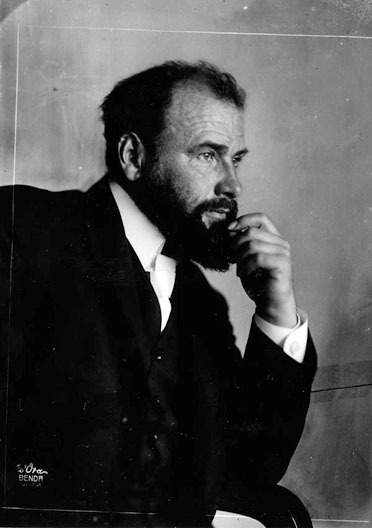
Photo by Dora Kallmus
Gustav Klimt was an Austrian Symbolist painter and one of the most prominent members of the Vienna Secession movement. His major works include paintings, murals, sketches, and other art objects. Klimt's primary subject was the female body, and his works are marked by a frank eroticism - nowhere is this more apparent than in his numerous drawings in pencil.
Gustav Klimt was born in Baumgarten, near Vienna, the second of seven children - three boys and four girls. All three sons displayed artistic talent early on. His father, Ernst Klimt, formerly from Bohemia, was a gold engraver. Ernst married Anna Klimt (née Finster), whose unrealized ambition was to be a musical performer. Klimt lived in poverty for most of his childhood, as work was scarce and economic advancement was difficult for immigrants.
In 1876, Klimt was awarded a scholarship to the Vienna School of Arts and Crafts (Kunstgewerbeschule), where he studied until 1883, and received training as an architectural painter. He revered the foremost history painter of the time, Hans Makart. Klimt readily accepted the principles of a conservative training; his early work may be classified as academic. In 1877 his brother Ernst, who, like his father, would become an engraver, also enrolled in the school. The two brothers and their friend Franz Matsch began working together; by 1880 they had received numerous commissions as a team they called the "Company of Artists", and helped their teacher in painting murals in the Kunsthistorisches Museum in Vienna. Klimt began his professional career painting interior murals and ceilings in large public buildings on the Ringstraße including a successful series of "Allegories and Emblems".
In 1888, Klimt received the Golden Order of Merit from Emperor Franz Josef I of Austria for his contributions to murals painted in the Burgtheater in Vienna. He also became an honorary member of the University of Munich and the University of Vienna. In 1892 both Klimt's father and brother Ernst died, and he had to assume financial responsibility for his father's and brother's families. The tragedies affected his artistic vision as well, and soon he would veer toward a new personal style. In the early 1890s, Klimt met Emilie Flöge, who, notwithstanding the artist's relationships with other women, was to be his companion until the end of his life. Whether his relationship with Flöge was sexual or not is debated, but during that period Klimt fathered at least 14 children.

(Portrait of Emilie Floge: 1902)
Klimt became one of the founding members and president of the Wiener Sezession (Vienna Secession) in 1897 and of the group's periodical Ver Sacrum (Sacred Spring). He remained with the Secession until 1908. The group's goals were to provide exhibitions for unconventional young artists, to bring the best foreign artists' works to Vienna, and to publish its own magazine to showcase members' work. The group declared no manifesto and did not set out to encourage any particular style -- Naturalists, Realists, and Symbolists all coexisted. The government supported their efforts and gave them a lease on public land to erect an exhibition hall. The group's symbol was Pallas Athena, the Greek goddess of just causes, wisdom, and the arts-and Klimt painted his radical version in 1898.
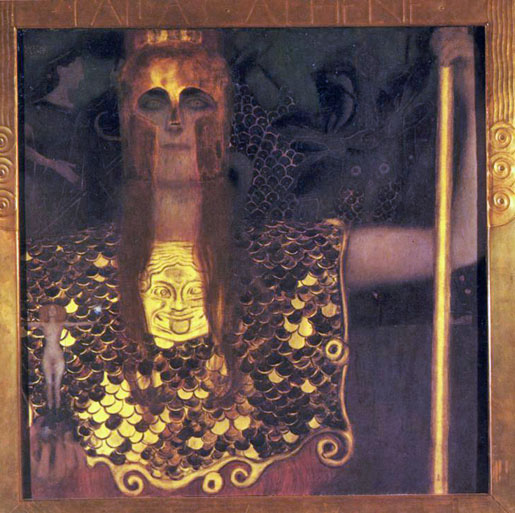
(Pallas Athena: 1898)
In 1894, Klimt was commissioned to create three paintings to decorate the ceiling of the Great Hall in the University of Vienna. Not completed until the turn of the century, his three paintings, Philosophy, Medicine and Jurisprudence were criticized for their radical themes and material, which was called "pornographic". Klimt had transformed traditional allegory and symbolism into a new language which was more overtly sexual, and hence more disturbing. The public outcry came from all quarters - political, aesthetic, and religious. As a result, they were not displayed on the ceiling of the Great Hall.
_1899 - 1907.jpg)
(Philosophy: 1899 - 1907
_1900_1907.jpg)
(Medicine: 1900 - 1907)
_1903_1907.jpg)
(Jurisprudence: 1903 - 1907)
This would be the last public commission accepted by the artist. All three paintings were destroyed by retreating SS forces in May 1945. His Nuda Verita (1899) defined his bid to further shake up the establishment. The starkly naked red-headed woman holds the mirror of truth, while above it is a quotation by Schiller in stylized lettering, "If you cannot please everyone with your deeds and your art, please a few. To please many is bad."

(Nuda Veritas: 1899)
In 1902, Klimt finished the Beethoven Frieze for the 14th Vienna Secessionist exhibition, which was intended to be a celebration of the composer and featured a monumental, polychromed sculpture by Max Klinger. Meant for the exhibition only, the frieze was painted directly on the walls with light materials. After the exhibition the painting was preserved, although it did not go on display until 1986.

(The Beethoven Frieze: 'The Hostile Powers Far Wall' 1902)
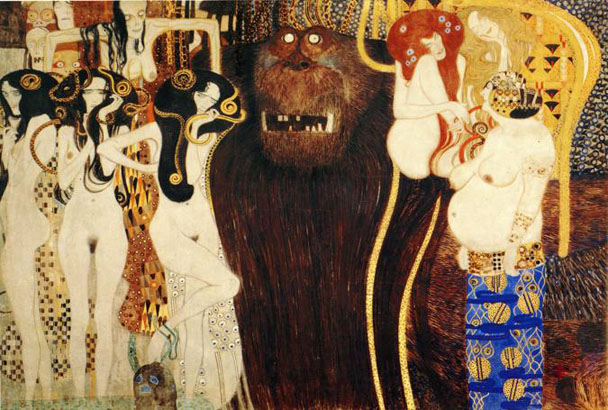
(The Beethoven Frieze: The Hostile Powers - Left Part Detail - 1902)
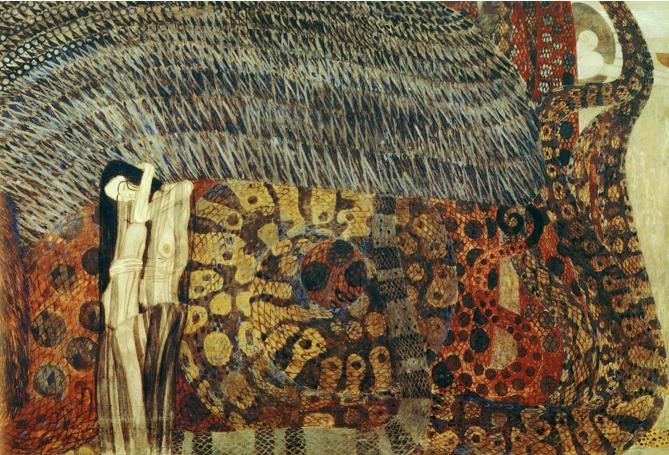
(The Beethoven Frieze: The Hostile Powers Right Part Detail - 1902)
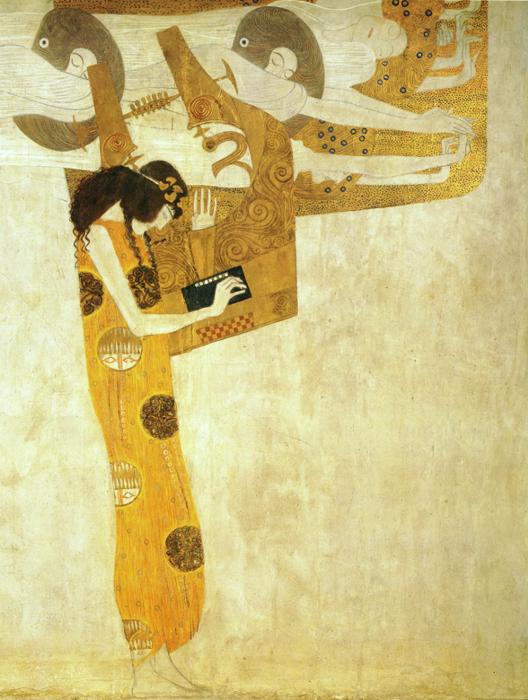
(The Beethoven Frieze: The Longing for Happiness Finds Repose in Poetry - 1902)

(The Beethoven Frieze: The Longing for Happiness Finds Repose in Poetry - 1902)
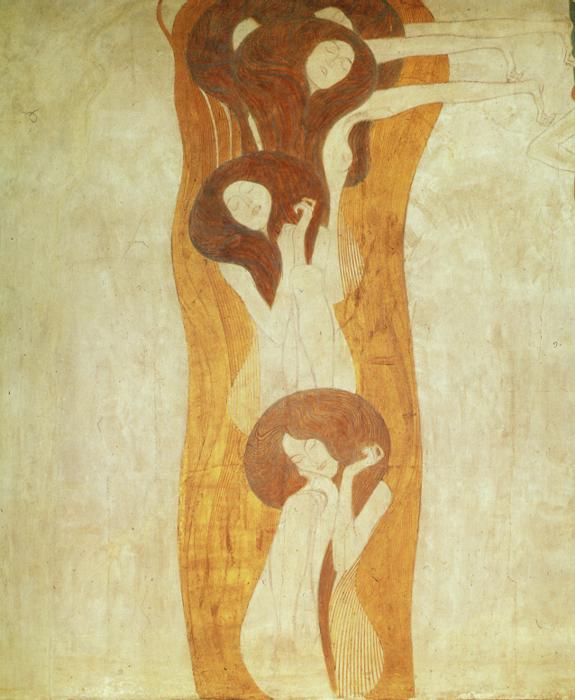
(The Beethoven Frieze: The Longing for Happiness Finds Repose in Poetry Right: 1902)
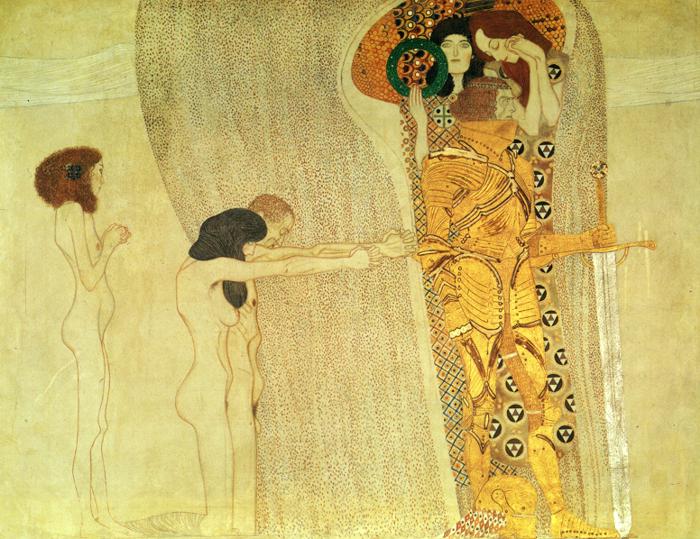
The Beethoven Frieze: The Longing for Happiness: 1902
During this period Klimt did not confine himself to public commissions. Beginning in the late 1890's he took annual summer holidays with the Flöge family on the shores of Attersee and painted many of his landscapes there. Klimt was largely interested in painting figures; these works constitute the only genre aside from figure-painting which seriously interested Klimt. Klimt's Attersee Paintings are of a number and quality so as to merit a separate appreciation. Formally, the landscapes are characterized by the same refinement of design and emphatic patterning as the figural pieces. Deep space in the Attersee works is so efficiently flattened to a single plane, it is believed that Klimt painted them while looking through a telescope.
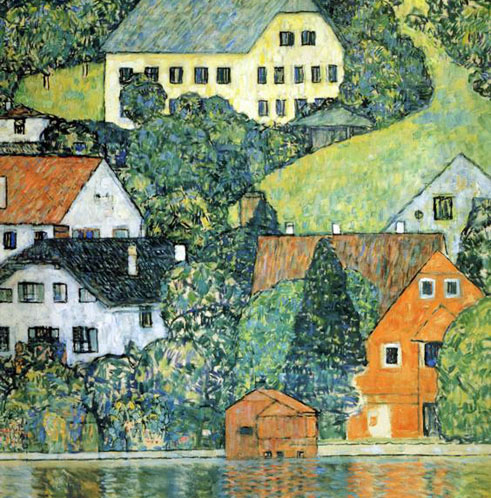
(Houses at Unterach on the Attersee: ca 1916)

(Church In Unterach On The Attersee)

(Schloss Kammer on Attersee)
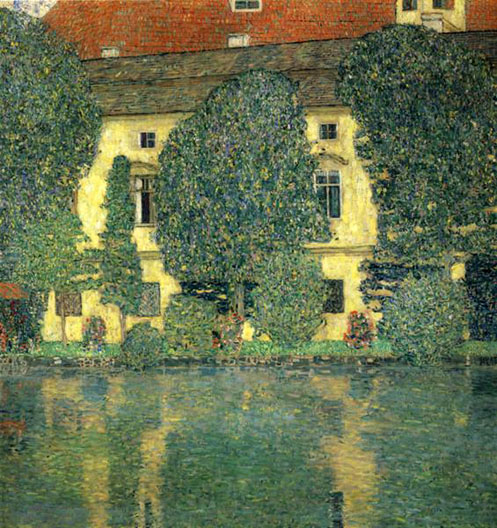
Schloss Kammer on the Attersee: 1910
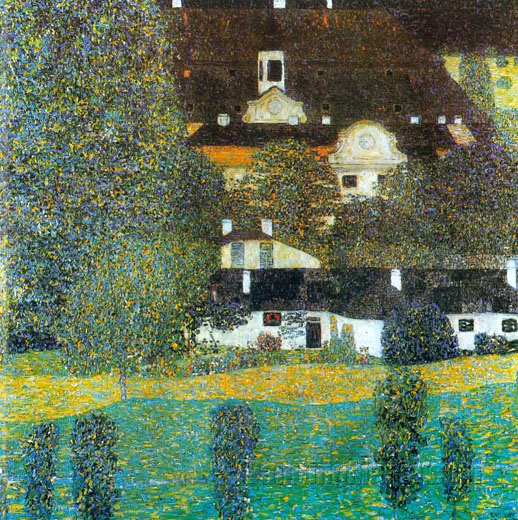
(Schloss Kammer on the Attersee II)
Klimt's 'Golden Phase' was marked by positive critical reaction and success. Many of his paintings from this period used gold leaf; the prominent use of gold can first be traced back to Pallas Athene (1898) and Judith I (1901), although the works most popularly associated with this period are the Portrait of Adele Bloch-Bauer I (1907) and The Kiss (1907-1908). Klimt travelled little but trips to Venice and Ravenna, both famous for their beautiful mosaics, most likely inspired his gold technique and his Byzantine imagery. In 1904, he collaborated with other artists on the lavish Palais Stoclet, the home of a wealthy Belgian industrialist, which was one of the grandest monuments of the Art Nouveau Age. Klimt's contributions to the dining room, including both Fulfillment and Expectation, were some of his finest decorative work, and as he publicly stated, "probably the ultimate stage of my development of ornament". Between 1907 and 1909, Klimt painted five canvases of society women wrapped in fur. His apparent love of costume is expressed in the many photographs of Flöge modeling clothing he designed.

Judith and Holopherne: 1901
_1909.jpg)
(Judith II (Salome): 1909)
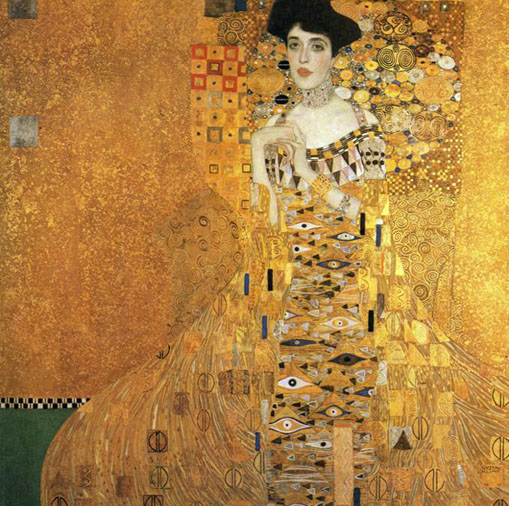
Portrait of Adele Bloch Bauer I: 1907
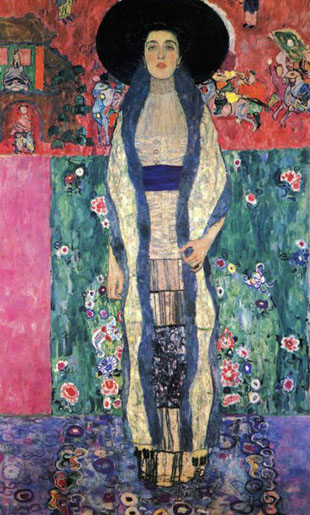
(Portrait of Adele Bloch Bauer II: 1912)
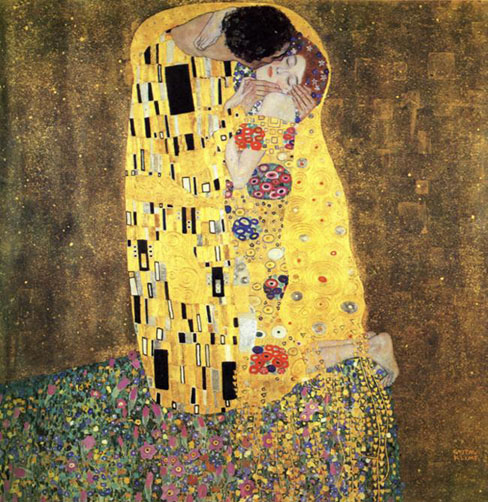
The Kiss: 1907 - 1908
As he worked and relaxed in his home, Klimt normally wore sandals and a long robe with no undergarments. His simple life was somewhat cloistered, devoted to his art and family and little else except the Secessionist Movement, and he avoided café society and other artists socially. Klimt's fame usually brought patrons to his door, and he could afford to be highly selective. His painting method was very deliberate and painstaking at times and he required lengthy sittings by his subjects. Though very active sexually, he kept his affairs discreet and he avoided personal scandal.
Klimt wrote little about his vision or his methods. He wrote mostly postcards to Flöge and kept no diary. In a rare writing called "Commentary on a non-existent self-portrait", he states "I have never painted a self-portrait. I am less interested in myself as a subject for a painting than I am in other people, above all women...There is nothing special about me. I am a painter who paints day after day from morning to night...Whoever wants to know something about me... ought to look carefully at my pictures."
In 1911 his painting Death and Life received first prize in the world exhibitions in Rome. In 1915 his mother Anna died. Klimt died three years later in Vienna on February 6, 1918, having suffered a stroke and pneumonia. He was buried at the Hietzing Cemetery in Vienna. Numerous paintings were left unfinished.
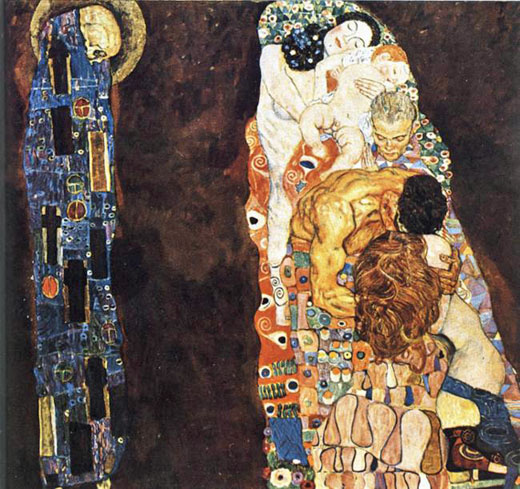
Death and Life: 1908 - 1916
Klimt's paintings have brought some of the highest prices recorded for individual works of art. In November 2003, Klimt's Landhaus am Attersee sold for $29,128,000, but that was soon eclipsed by prices paid for other Klimt's.
In 2006, the 1907 portrait, Adele Bloch-Bauer I, was purchased for the Neue Galerie in New York by Ronald Lauder for a reported US $135 million, surpassing Picasso's 1905 Boy With a Pipe (sold May 5, 2004 for $104 million), as the highest reported price ever paid for a painting. On August 7, 2006, Christie's auction house announced it was handling the sale of the remaining four works by Klimt that were recovered by Maria Altmann and her co-heirs after their long legal battle against Austria. Portrait of Adele Bloch-Bauer II was sold at auction in November 2006 for $88 million, the third-highest priced piece of art at auction at the time. 'The Apple Tree I' (ca. 1912) sold for $33 million, 'Birch Forest' (1903) sold for $40.3 million, and 'Houses in Unterach on Lake Atter' (1916) sold for $31 million. Collectively, the five restituted paintings netted over $327 million.
Klimt's work is often distinguished by elegant gold or colored decoration, spirals and swirls, and phallic shapes used to conceal the more erotic positions of the drawings upon which many of his paintings are based. This can be seen in Judith I (1901), and in The Kiss (1907-1908), and especially in Danaë (1907). One of the most common themes Klimt used was that of the dominant woman, the femme fatale.
Art historians note an eclectic range of influences contributing to Klimt's distinct style, including Egyptian, Minoan, Classical Greek, and Byzantine inspirations. Klimt was also inspired by the engravings of Albrecht Dürer, late medieval European painting, and Japanese Rimpa school. His mature works are characterized by a rejection of earlier naturalistic styles, and make use of symbols or symbolic elements to convey psychological ideas and emphasize the "freedom" of art from traditional culture
Sources
Various works of Gustave Klimt ranging from portraits, landscapes, and other forms of symbolism that are considered pornographic by some. They are in no specific thematic or chronological order.
Eva_(unfinished)_1917_1918.jpg)
Adam and Eva (unfinished): 1917-1918
_1899.jpg)
After the Rain
(Garden with Chickens in Saint Agatha): 1899
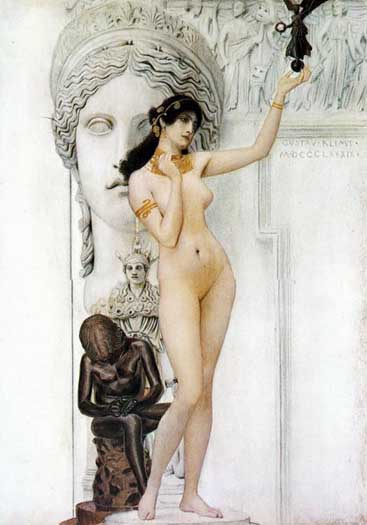
Allegory of Sculpture: 1889

Apple Tree I: ca 1912
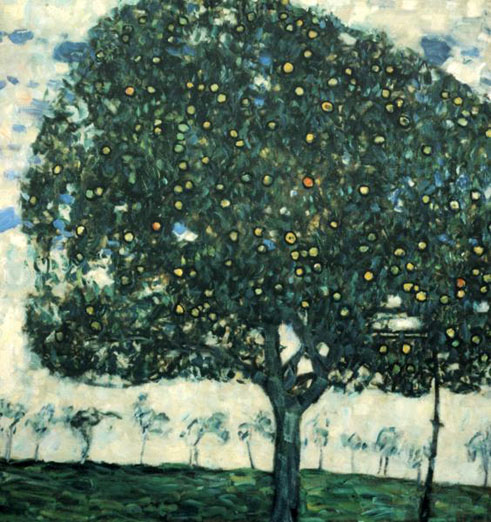
Apple Tree II: 1916
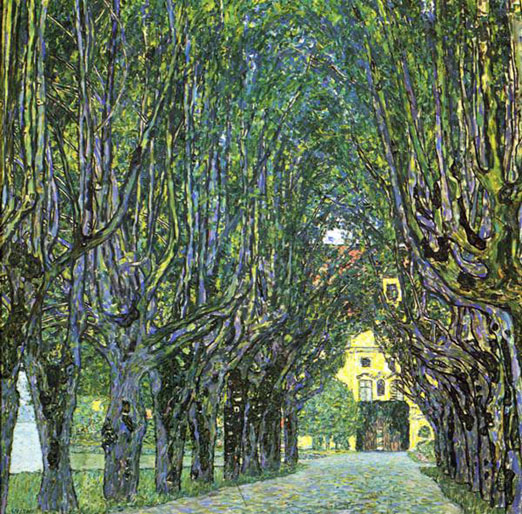
Avenue of Schloss Kammer Park: 1912
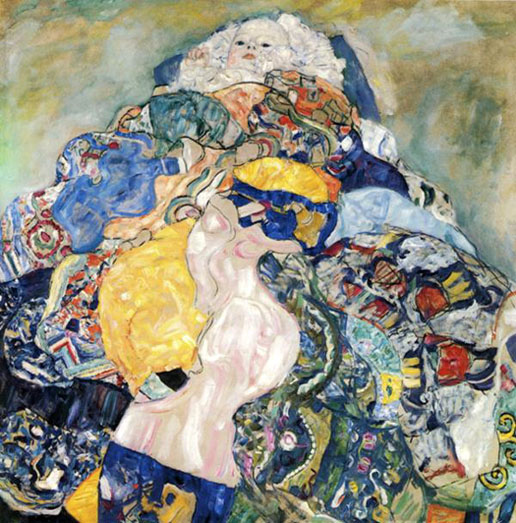
Baby: 1917-1918
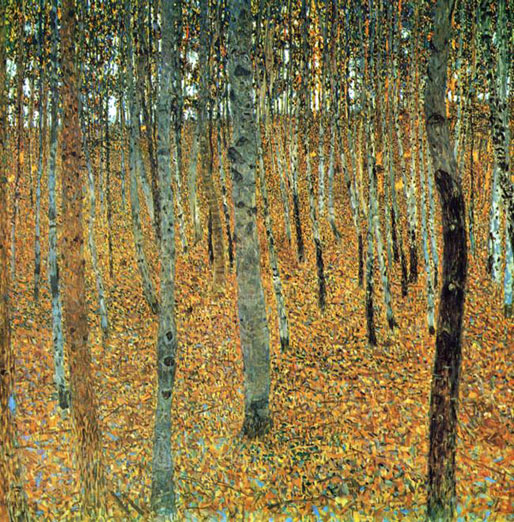
Beech Grove I: 1902

Birch in a Forest: ca 1903
Brussels_Fulfillment_1905_1909.jpg)
Cartoon for the Frieze of the Villa Stoclet in Brussels Fulfillment: 1905-1909
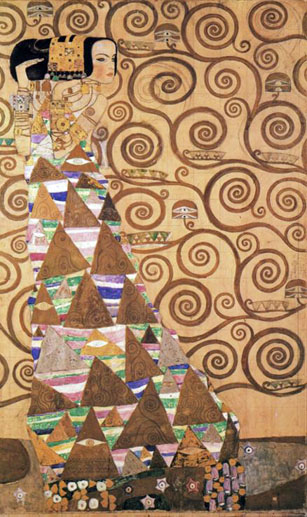
Cartoon for the Frieze of the Villa Stoclet in Brussels Expectation: 1905-1909

Cartoon for the Frieze of the Villa Stoclet in Brussels
Left Part of the Tree of Life: 1905-1909
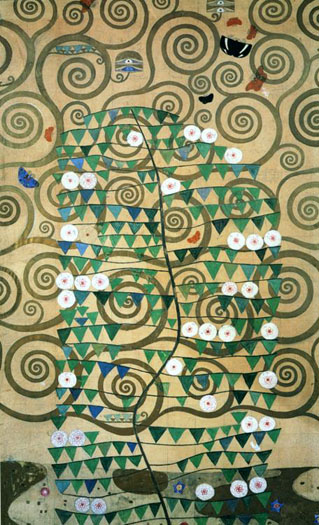
Cartoon for the Frieze of the Villa Stoclet in Brussels
Left Part of the Tree of Life: 1905-1909 (Two)
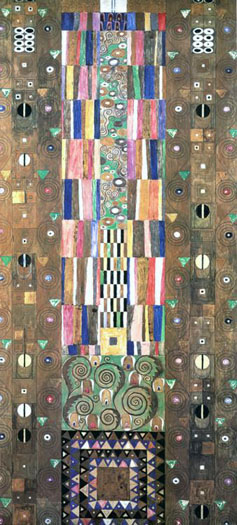
Cartoon for the Frieze of the Villa Stoclet in Brussels Separate Decorated Panel
Left Part of the Tree of Life: 1905-1909
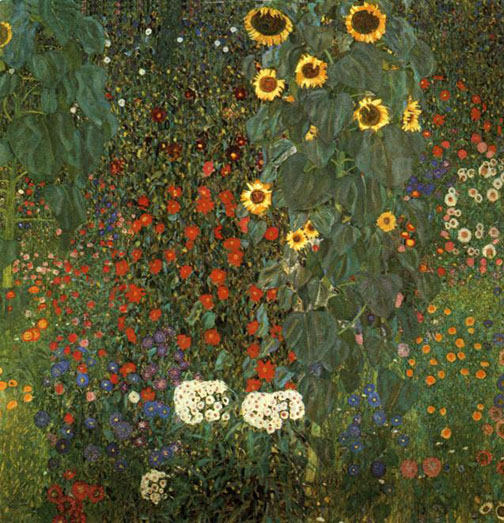
Country Garden with Sunflowers: 1905-1906
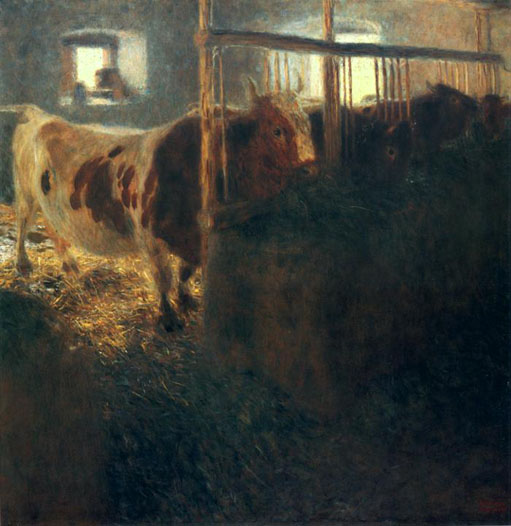
Cows in a Stall: 1900-01
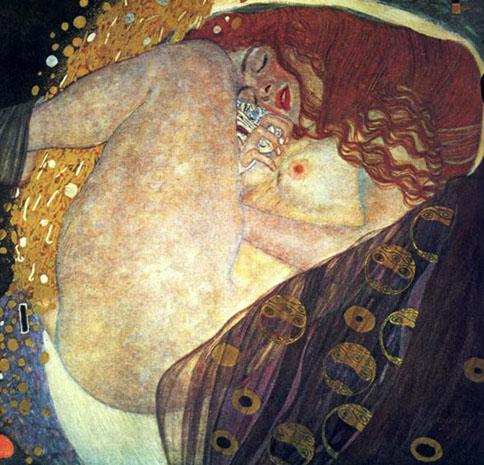
Danae: 1907-1908

Emilie Floge Aged 17: 1891

Fable: 1883
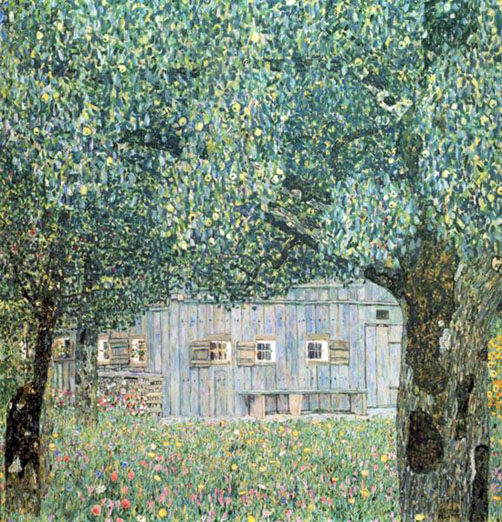
Farmhouse in Upper Austria: 1911-12
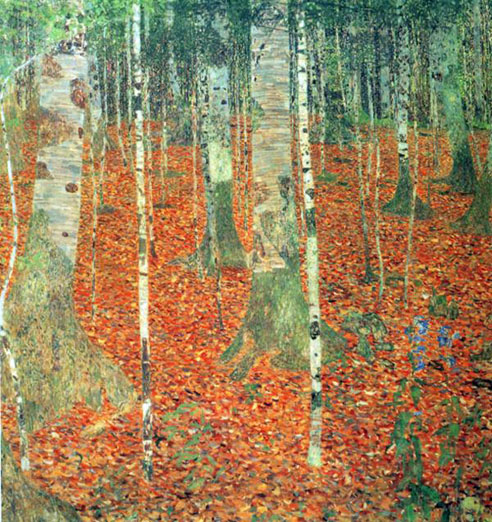
Farmhouse with Birch Trees: 1903
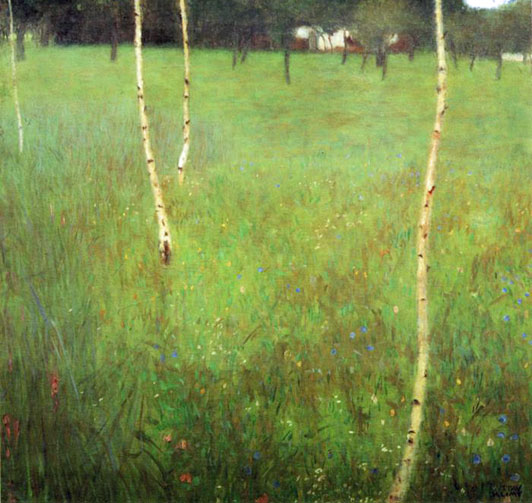
Farmhouses with Birch Trees: 1900
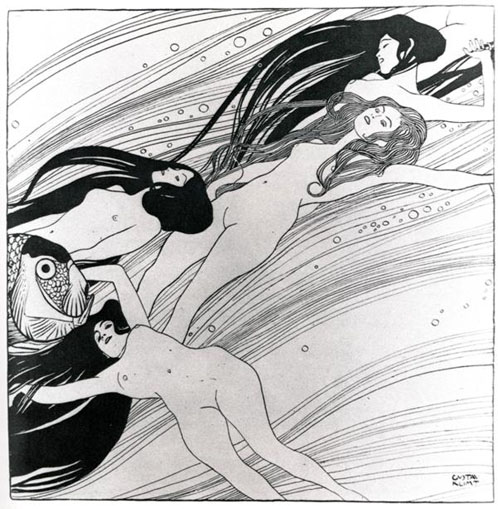
Fishblood-Original Destroyed: 1898

Flowering Field: ca 1909
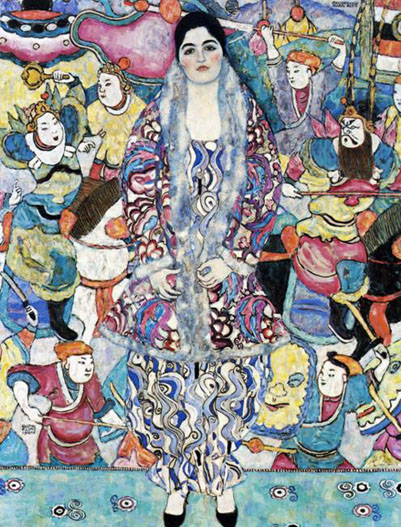
Fredericke Maria Beer: 1916

Friends: 1917

Friends: 1917 (Two)
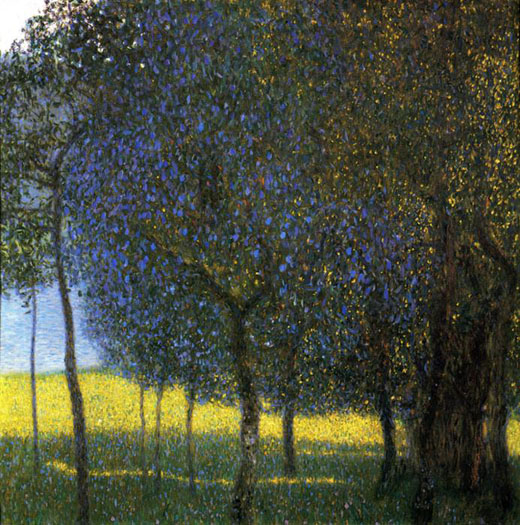
Fruit Trees: 1901
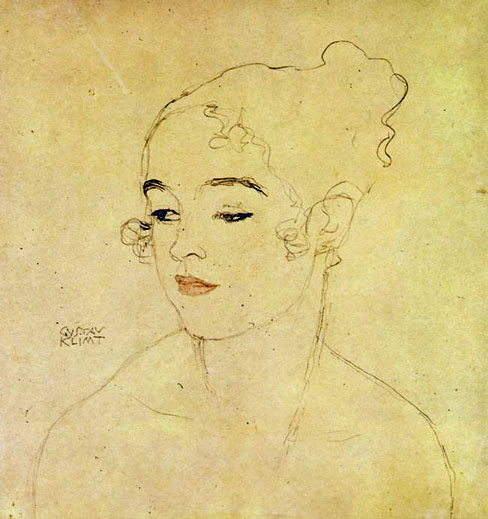
Girls Head Turned Left: 1915
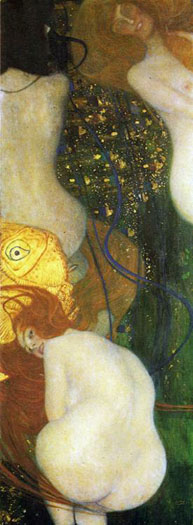
Goldfish: 1901-1902

Hope I: 1903
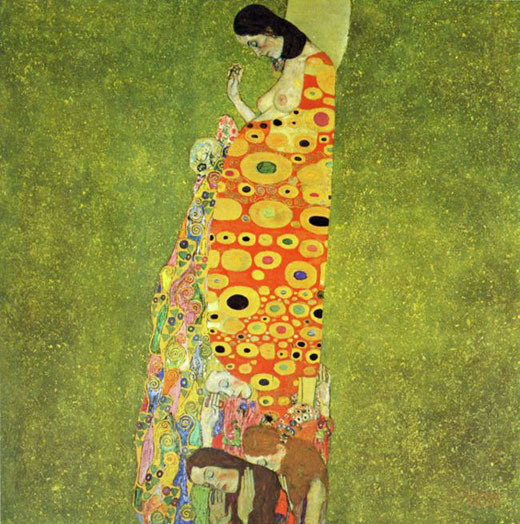
Hope II: 1907-1908
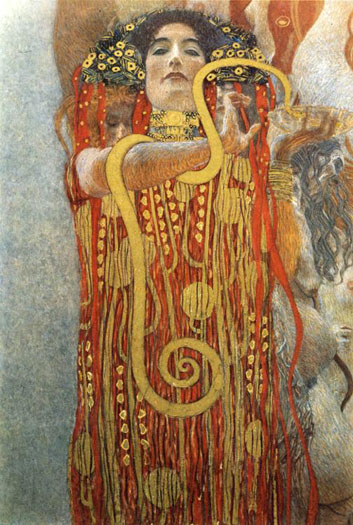
Hygeia
(Detail of Medicine): 1900-1907
_1884.jpg)
Idylle (Idylls): 1884

Junius: 1896
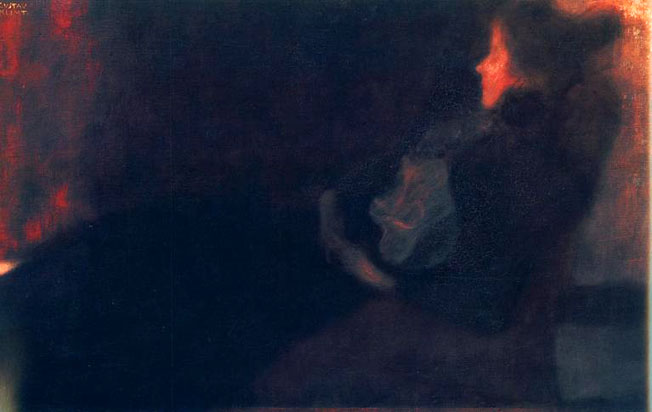
Lady by the Fireplace: 1897-98

Lady with Hat and Featherboa: 1909
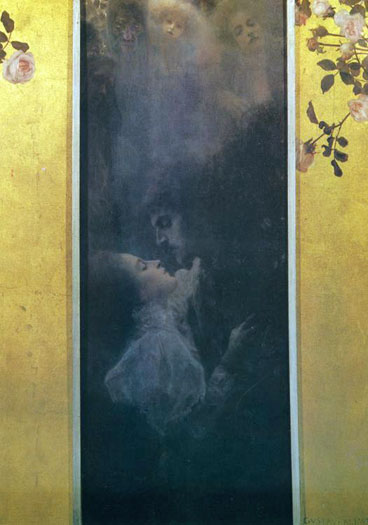
Love: 1895
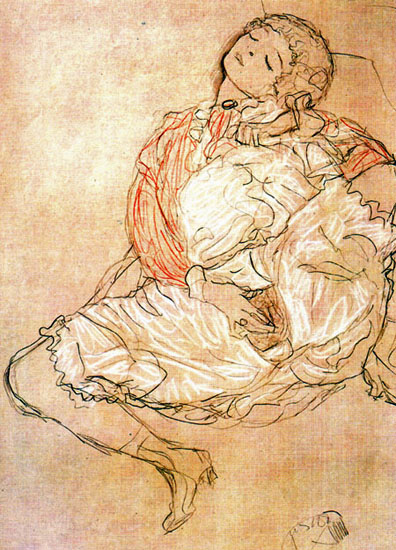
Masturbation: 1913
Mulher sentada
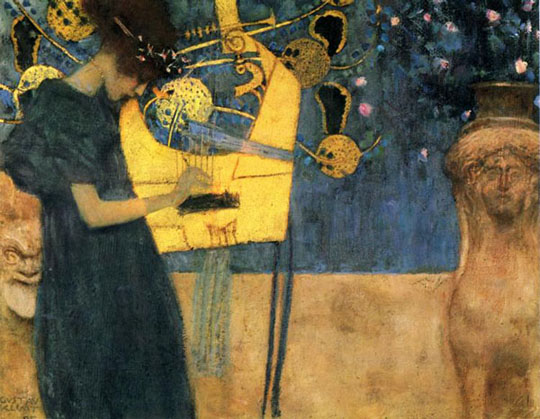
Music: 1895
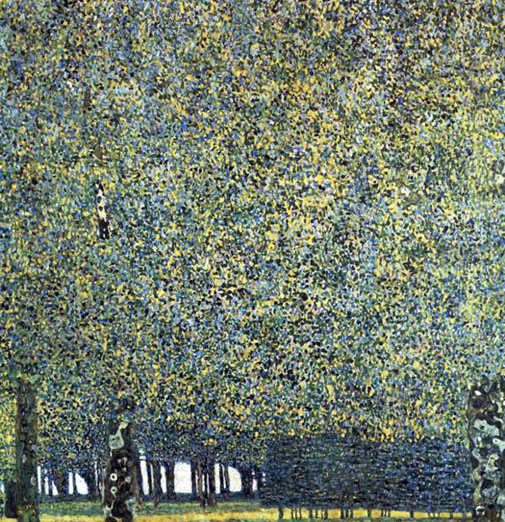
Park: 1909-10
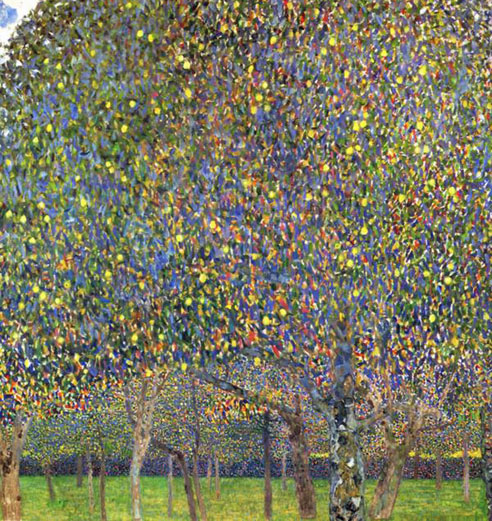
Pear Tree: 1903
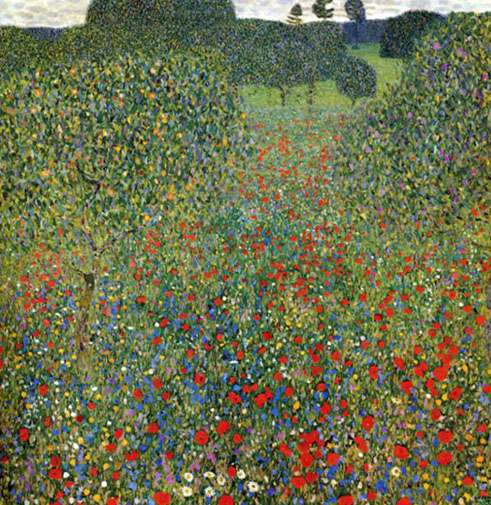
Poppy Field: 1907
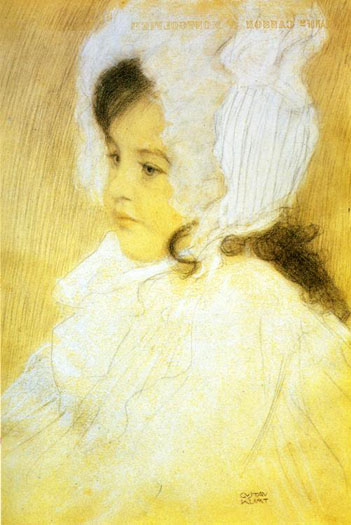
Portrait of a Girl: 1902
_1917_18.jpg)
Portrait of a Lady (unfinished): 1917-18
_1917_18_Two.jpg)
Portrait of a Lady (unfinished): 1917-18 (Two)
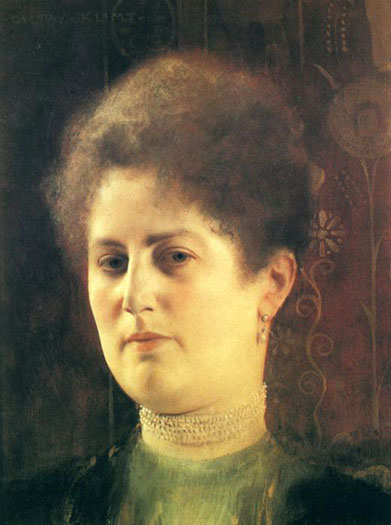
Portrait of a Lady: 1894
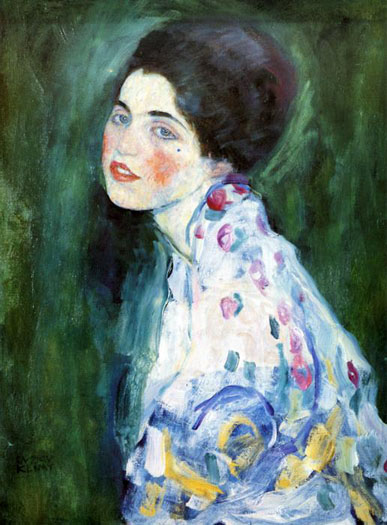
Portrait of a Lady: ca 1916-1917
_1917_18.jpg)
Portrait of a Lady in White (unfinished): 1917-18

Portrait of Emilie Floge: ca 1893
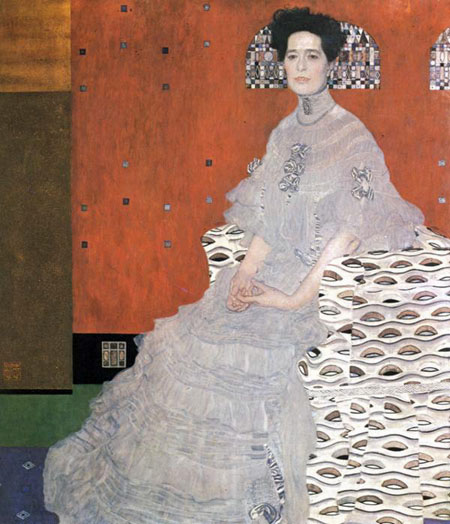
Portrait of Fritza Riedler: 1906
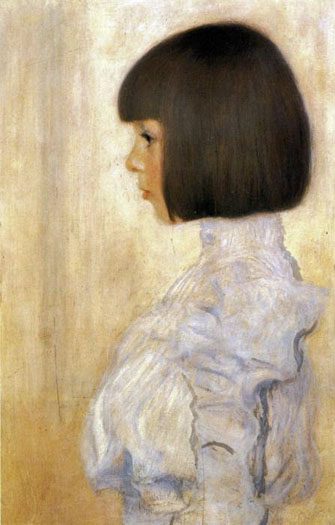
Portrait of Helene Klimt: 1898

Portrait of Hermine Gallia: 1903
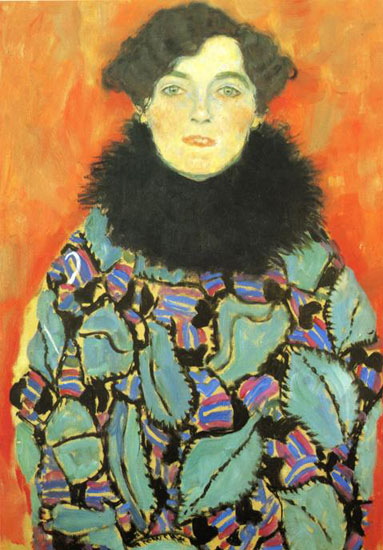
Portrait of Johanna Staude: 1917-18
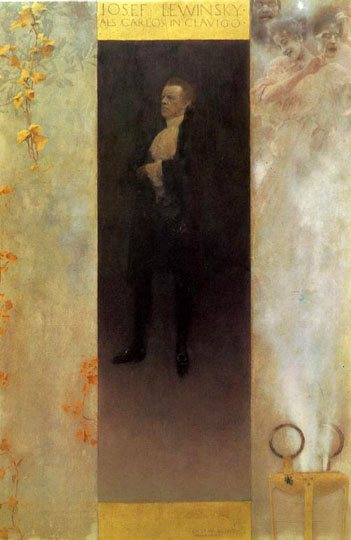
Portrait of Josef Lewinsky: 1895
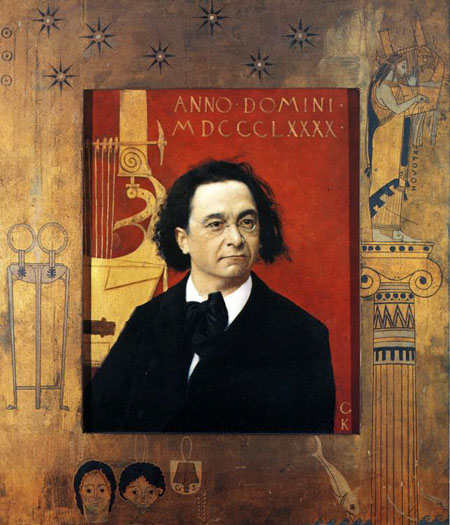
Portrait of Joseph Pembauer: 1890
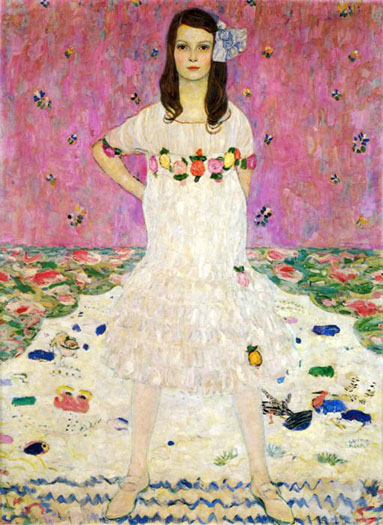
Portrait of Mada Primavesi: 1921
Mada Primavesi was the daughter of the banker and industrialist Otto Primavesi, one of the financial backers of the Wiener Werkstatte, and the actress Eugenia Primavesi (née Butschek), whom Klimt painted in 1913. Young Mada's portrait was executed in 1912. A series of preliminary pencil sketches, now in public and private collections, show that as the composition evolved, the artist experimented with alternative poses and background motifs. Ultimately, he selected an open, painterly treatment that contrasts with the highly stylized designs adapted for the backgrounds of his fin-de-siècle portraits. The lighthearted, decorative motifs seem particularly appropriate to a nine-year-old sitter.
Quoted From: Heilbrunn Timeline of Art History | The Metropolitan Museum of Art
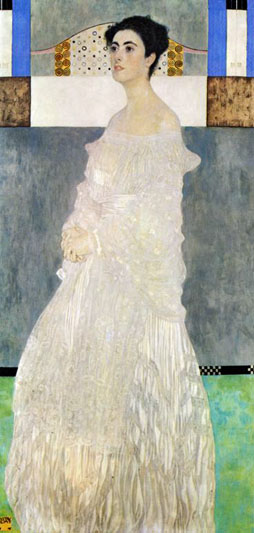
Portrait of Margarethe Stoneborough Wittgenstein: 1905
Margarethe "Gretl" Stonborough-Wittgenstein, of the prominent and wealthy Viennese Wittgenstein family, was a sister of the philosopher Ludwig Wittgenstein and the pianist Paul Wittgenstein. She was the subject of a famous 1905 portrait by the artist Gustav Klimt: it was sold in 1960 by her son Thomas and may now be seen in the Neue Pinakothek gallery in Munich.
On 7 January, 1905, she married a wealthy American, Jerome Stonborough (1873 -June 1938, suicide). Of German Jewish ancestry and born Jerome Herman Steinberger, he had had his name changed to Stonborough in 1900. He was also an art collector. They were close friends with Hermann Rothe, Margaret was the godmother of his daughter Margarethe. The couple had two sons and divorced in 1923. One son, Dr. Thomas Humphrey Stonborough, was a friend of Marguerite Respinger (1904-2000), whom he had met when he was studying in Cambridge and had invited to Vienna; she was briefly (1926-1931) the only known female interest of Ludwig Wittgenstein.
In 1939, Thomas Stonborough married Elizabeth Churchill, but they soon divorced (she remarried Washington Evening Star columnist Constantine Brown, and became a journalist and anti-communist activist under the name of Elizabeth Churchill Brown).
Major John Jerome Stonborough (11 June 1912, Vienna - 29 April 2002, Ferndown, Dorset). Although a US citizen, he served in the Canadian army during Second World War as an intelligence officer and interpreter. He married the daughter of a distinguished Northumberland family, Veronica Morrison-Bell (daughter of Sir Claude William Hedley Morrison-Bell, 2nd Baronet), and after the war lived between Britain and Austria.
After the First World War, Stonborough-Wittgenstein was appointed by the American Relief Administrator Herbert Hoover (later president of the United States) as special representative of the American Relief Program for Austria. When working in juvenile prisons as a psychotherapy adviser, she came into contact with Sigmund Freud and was analyzed by him during two years. They remained in contact until Freud's death.
In 1926, she commissioned her brother Ludwig and the architect Paul Engelmann to design and build Haus Wittgenstein in Vienna. Sold by her son Thomas in 1968, this noted building still stands today, and now houses the Bulgarian Cultural Institute. In 1940, she emigrated to the USA, but returned to Austria after the war and obtained restitution of part of her wealth which had been confiscated by the Nazis.
Quoted From: Margaret Stonborough-Wittgenstein - Wikipedia
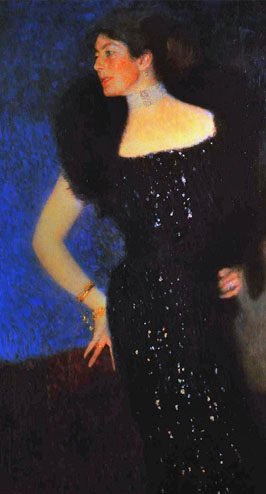
Portrait of Rose von Rosthorn Friedmann: 1900-01
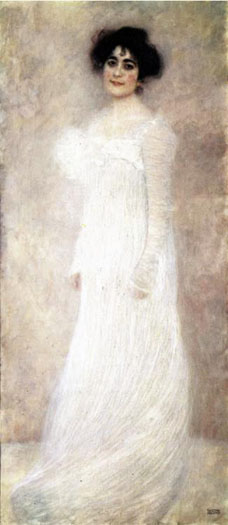
Portrait of Serena Lederer: 1899
The daughter of a wealthy family (the American journalist and publisher Joseph Pulitzer was a relative) was regarded as a famous beauty in her youth. All her life she used the appearance and allure of a Grande Dame. On 5 June 1892, she married before the Pest rabbinate in 1857, born industrialist August Lederer.
The family, sprung from three of the children resided in Raab (Gyor) in Bartensteingasse 8 in Vienna and in Ledererschlössel in Weidlingau. In the Vienna town homes, allegedly at the behest of the hostess could not be photographed, a special room was dedicated to the Klimt collection. The Portrait of Serena Lederer in 1899, was this the beginning of a close emotional relationship. Recommendation Gustav Klimt's wrong about after 1912 and Egon Schiele in the house Lederer and befriended especially Erich Lederer, the younger son of the family with.
Serena Lederer regarded as the engine behind the art purchases August Lederer. There are Klimt's portrait of her mother, her daughter Elizabeth and of themselves to what extent the relationship Serena Lederer Gustav Klimt to intimate character had is hard to prove. In the era of National Socialism , when the possession of Aryan ancestors was essential, Klimt's reached her daughter Elisabeth in any case the official recognition of the illegitimate father.
Quoted From: Serena Lederer - Wikipedia
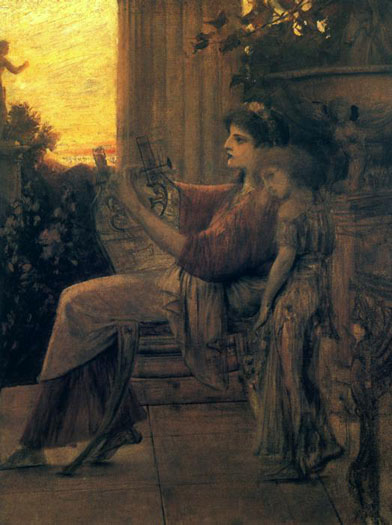
Sappho: 1888-90
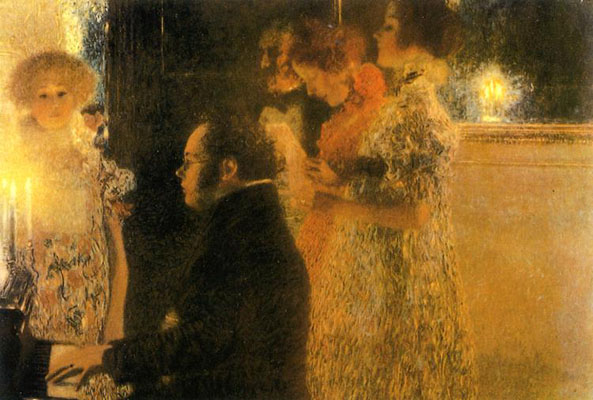
Schubert at the Piano: Date Unknown
Franz Peter Schubert (1797-1828) was a Viennese composer of the early 19th Century, considered to be one of the greatest Austrian composers of all time. During his short life -- Schubert died at the age of just 31 -- he managed to produce nine symphonies, several sonatas and over 600 individual songs. He is considered to be the last great master of Austrian Classical music, and one of the first great masters of musical Romanticism. Schubert was born in 1797 in Himmelpfortgrund, a town near Vienna. His father, also named Franz, was a schoolmaster and amateur musician, and it was he who first taught the young Schubert music. In 1808, at the age of 11, Schubert joined the Imperial Chapel Choir as a choir boy. At the same time, the boy was enrolled at the musical school run by Antonio Salieri, where he quickly caught the attention of the famous composer.
When his voice began to change, Schubert left both the choir and Salieri's school and began to work as a teacher at his father's school for a miserable salary. He continued to receive private lessons in composition from Salieri. These would turn out to be some of Schubert's most productive years: he composed some 300 songs, several symphonies, operas, sonatas and a string quartet.
In 1816, Schubert's fortunes began to change for the better. Franz von Schober, a young man from a rich family, offered to sponsor Schubert's creativity. Schubert moved into Schober's house and devoted himself to composition. This would characterize most of the rest of the composer's life: Schubert remained for the most part penniless, all his needs provided for by the generosity of his friends.
In 1822, Schubert began showing the first symptoms of tertiary syphilis. This began a continuous deterioration of his health that ended with his death in 1828, of typhoid fever.
Schubert's music would only begin to be recognized for its genius some decades after his death. Nowadays, he is widely regarded as one of the greatest composers of all time.
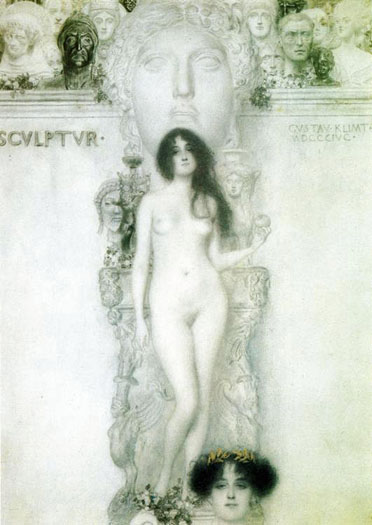
Sculpture: 1896

Sonja Knips: 1898
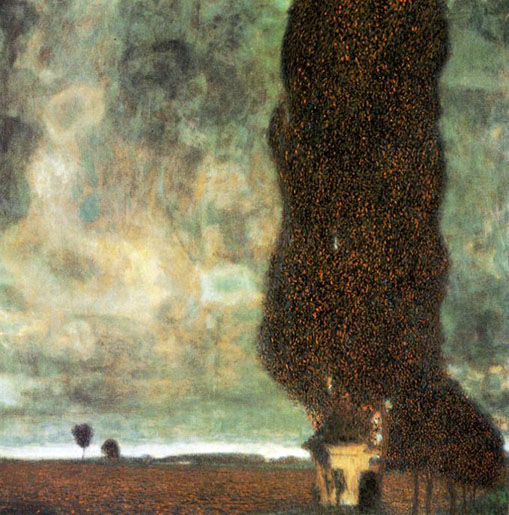
The Big Poplar II: 1902-03
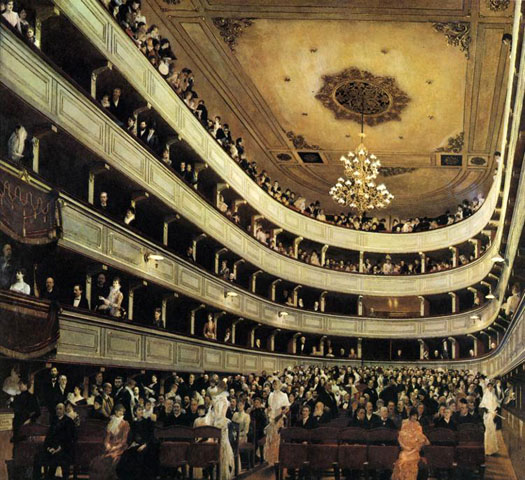
The Old Burgtheater: 1888-89
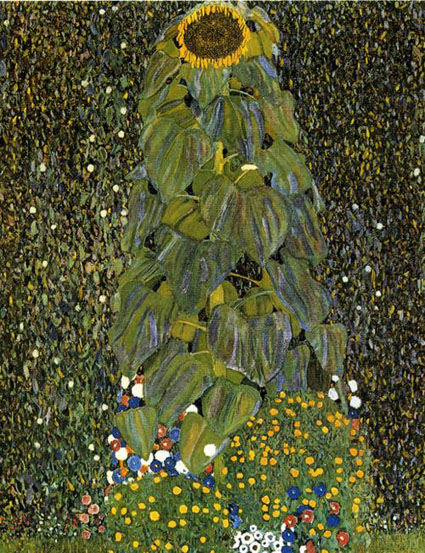
The Sunflower (Detail): 1907
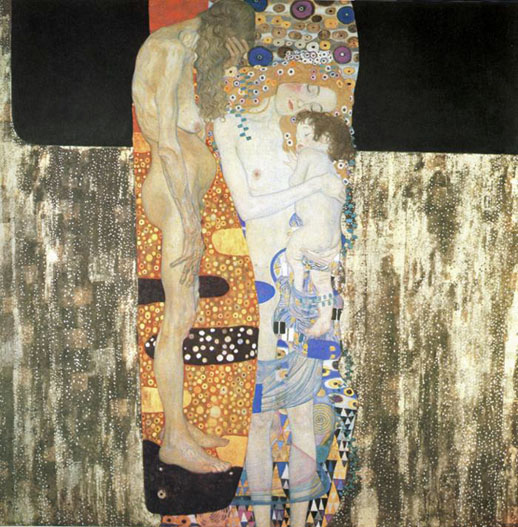
The Three Ages of Woman: 1905
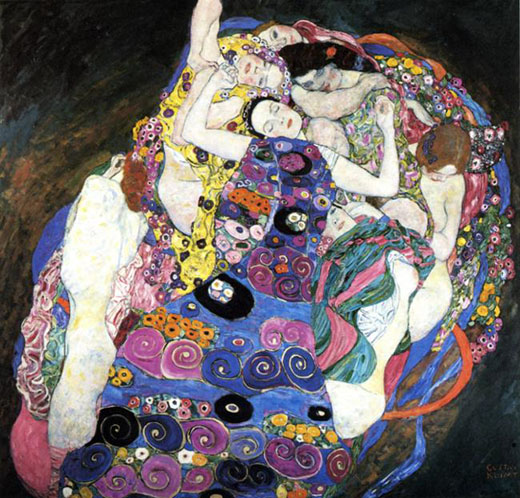
The Virgin: 1913
"I have the gift of neither the spoken nor the written word, especially if I have to say something about myself or my work. Whoever wants to know something about me -as an artist, the only notable thing- ought to look carefully at my pictures and try and see in them what I am and what I want to do."
Gustav Klimt

Theater in Taormina: 1886-88
_1897.jpg)
Tragodie
(Tragedy): 1897
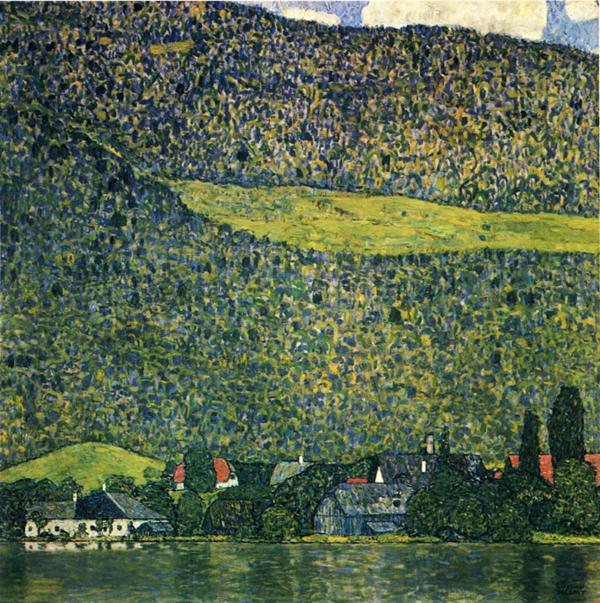
Unterach am Attersee: 1915
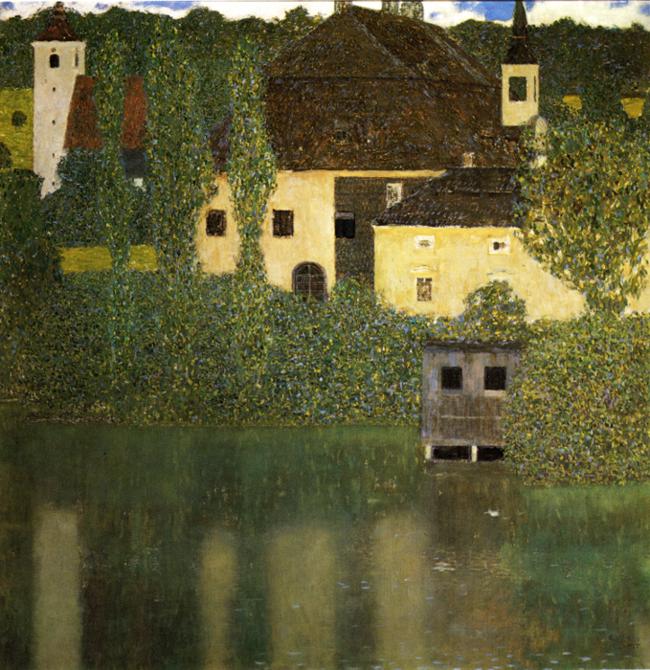
Water Castle: 1908
_ca_1899.jpg)
Water Nymphs
(Silverfish): ca 1899
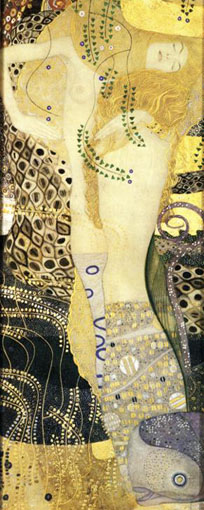
Watersnakes: 1904-1907
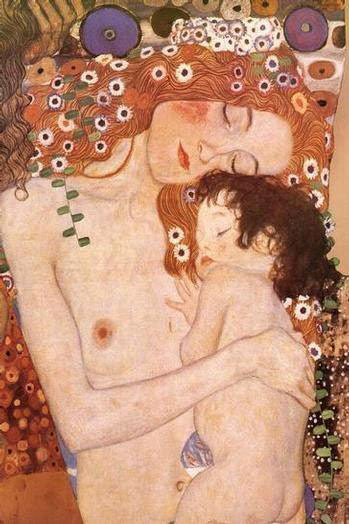
Mother and Child: 1905
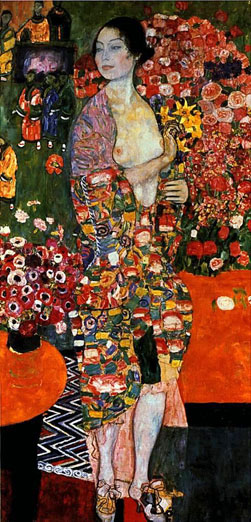
The Dancer: 1918

Water Serpents: 1907
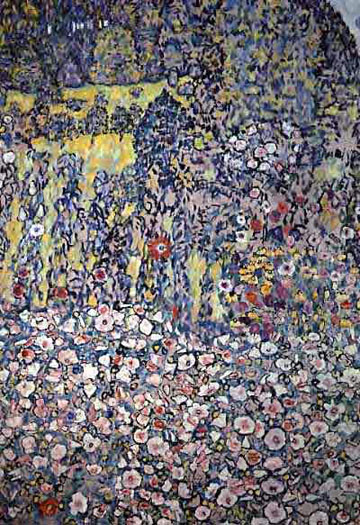
Garden on a Hill: 1917
_1910.jpg)
The Black Feather Hat
(Lady with Feather Hat): 1910

Garden Path with Chickens: 1916
_1917_18.jpg)
The Bride
(unfinished): 1917-18
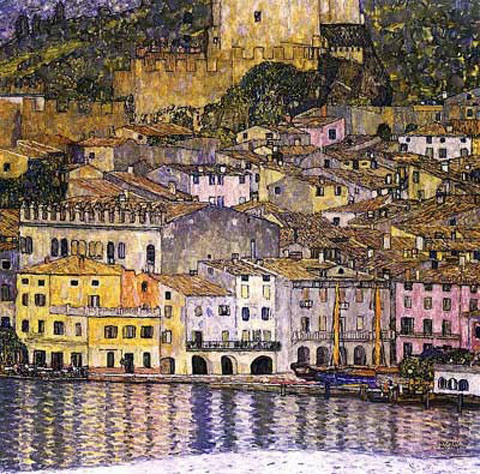
Malcesine on Lake Garda
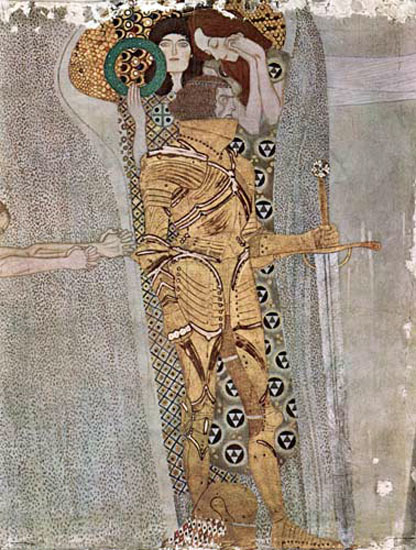
Der goldene Ritter: 1901
Symbolist painting emphasized fantasy and imagination in their depiction of objects. The artists of the movement often used metaphors and symbols to suggest a subject and favored mystical and occult themes. Influenced by Romanticism and the Pre-Raphaelite Brotherhood, the movement strived to depict the symbols of ideas. The movement originated in France and spread across Europe. Symbolists were opposed to the visual realism of the Impressionists and serious nature of the Industrial Age. Their aim was to portray mysterious and ambiguous interpretations of emotions and ideas by using unobvious symbols. Some artists, including Puvis de Chavannes, Moreau, and Redon, borrowed their imagery from Symbolist writings. These works would often contain grotesque and fantastical imagery such as severed heads, monsters, and spirits. In addition, their works sometimes contained references to the Bible and ancient myths. Other Symbolists took a more traditional approach, using lines and colors to produce emotional effects. The Symbolist movement was important to the development of the Surrealism.
Quoted From: Symbolism Art - Artists, Artworks and Biographies

Lady With Fan

Malcesine on Lake Garda
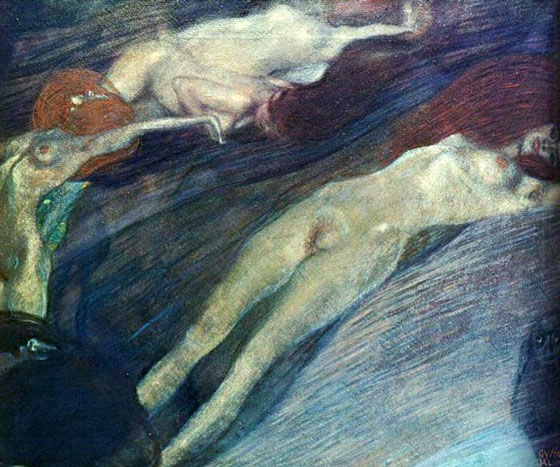
Moving Water I
.jpg)
Polecat Fur The (unfinished)
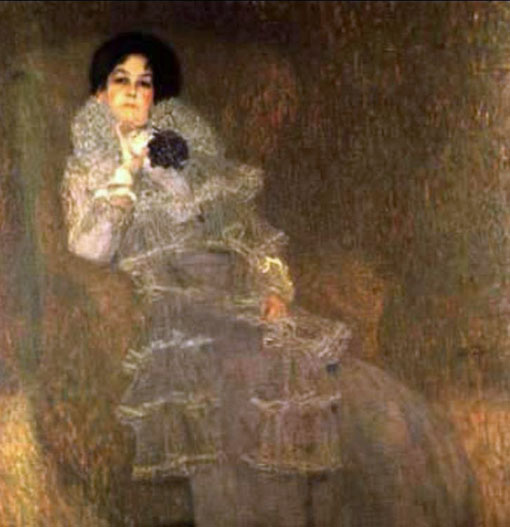
Portrait of Marie Henneberg
.jpg)
Portrait of Amalie Zuckerkandl
(unfinished)

Portrait of Baroness Elisabeth Bacchofen Echt
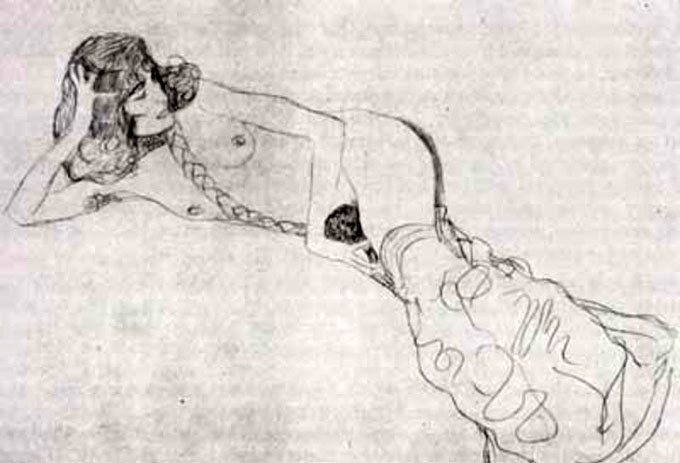
Reclining Woman
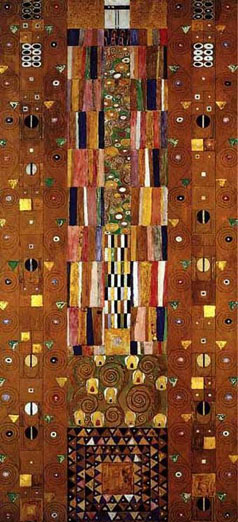
Stocletfrieze
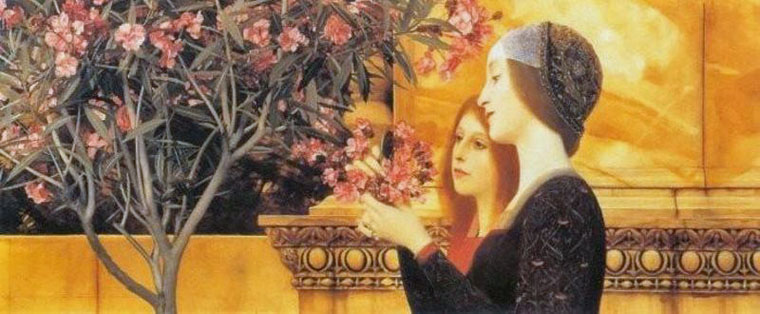
Two Girls with Oleander
Return to Pagina Artis
Return to Bruce and Bobbie's Main Page.